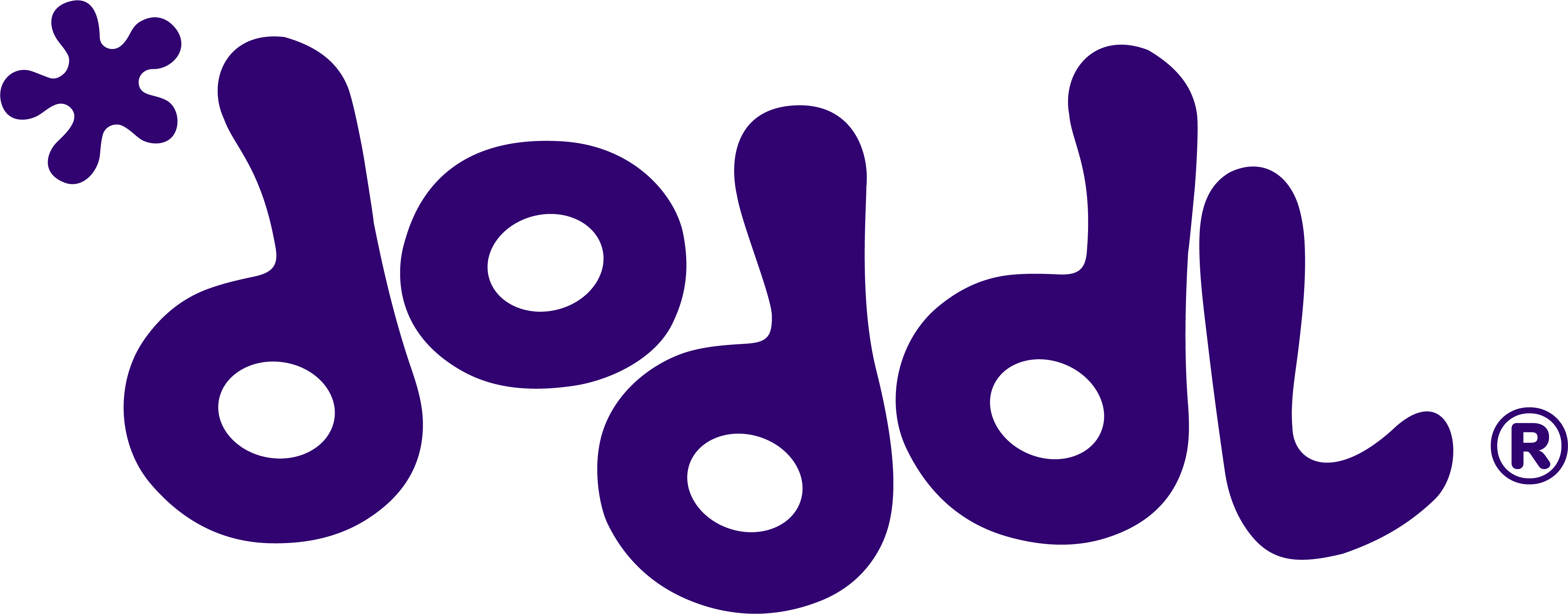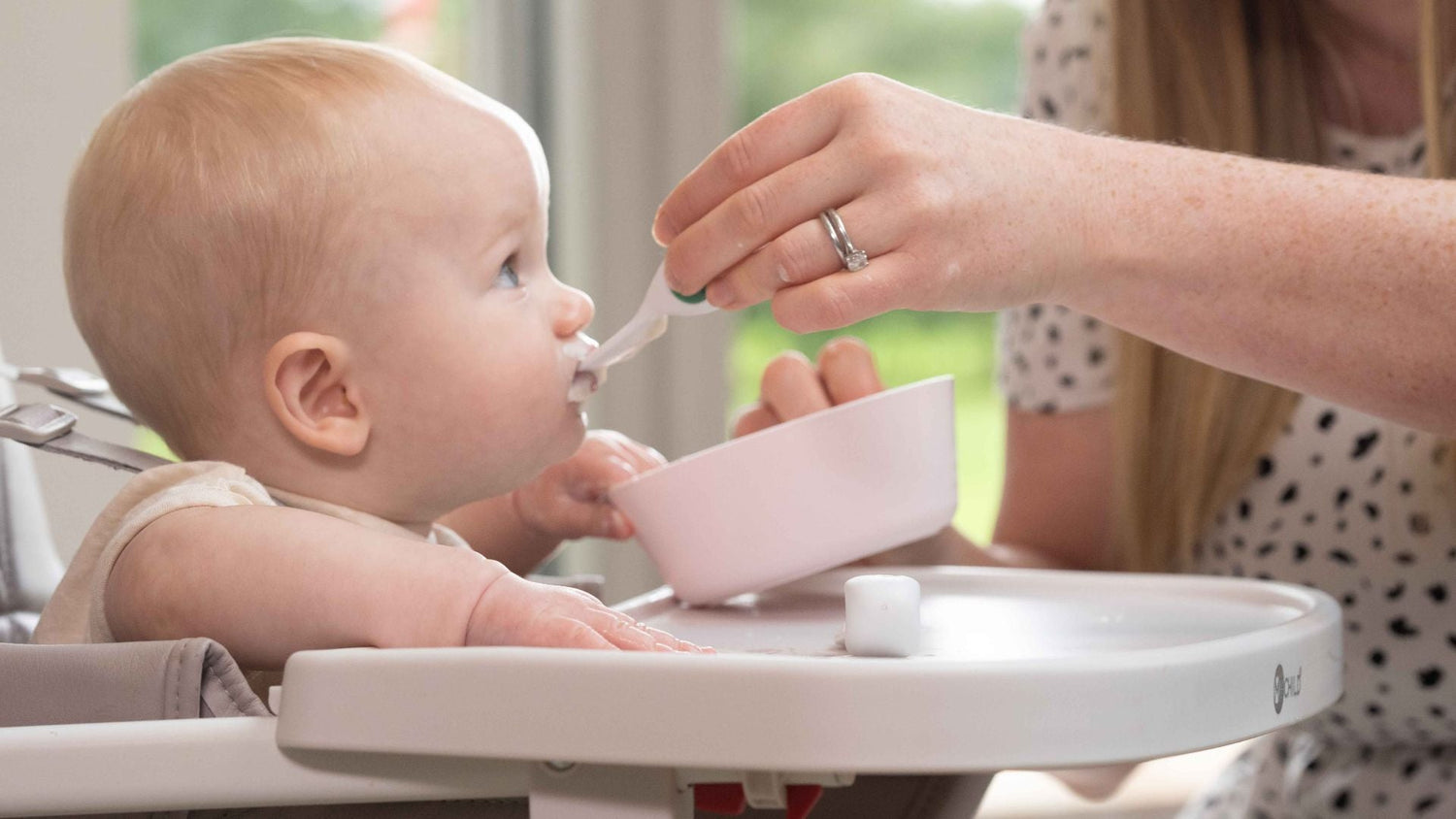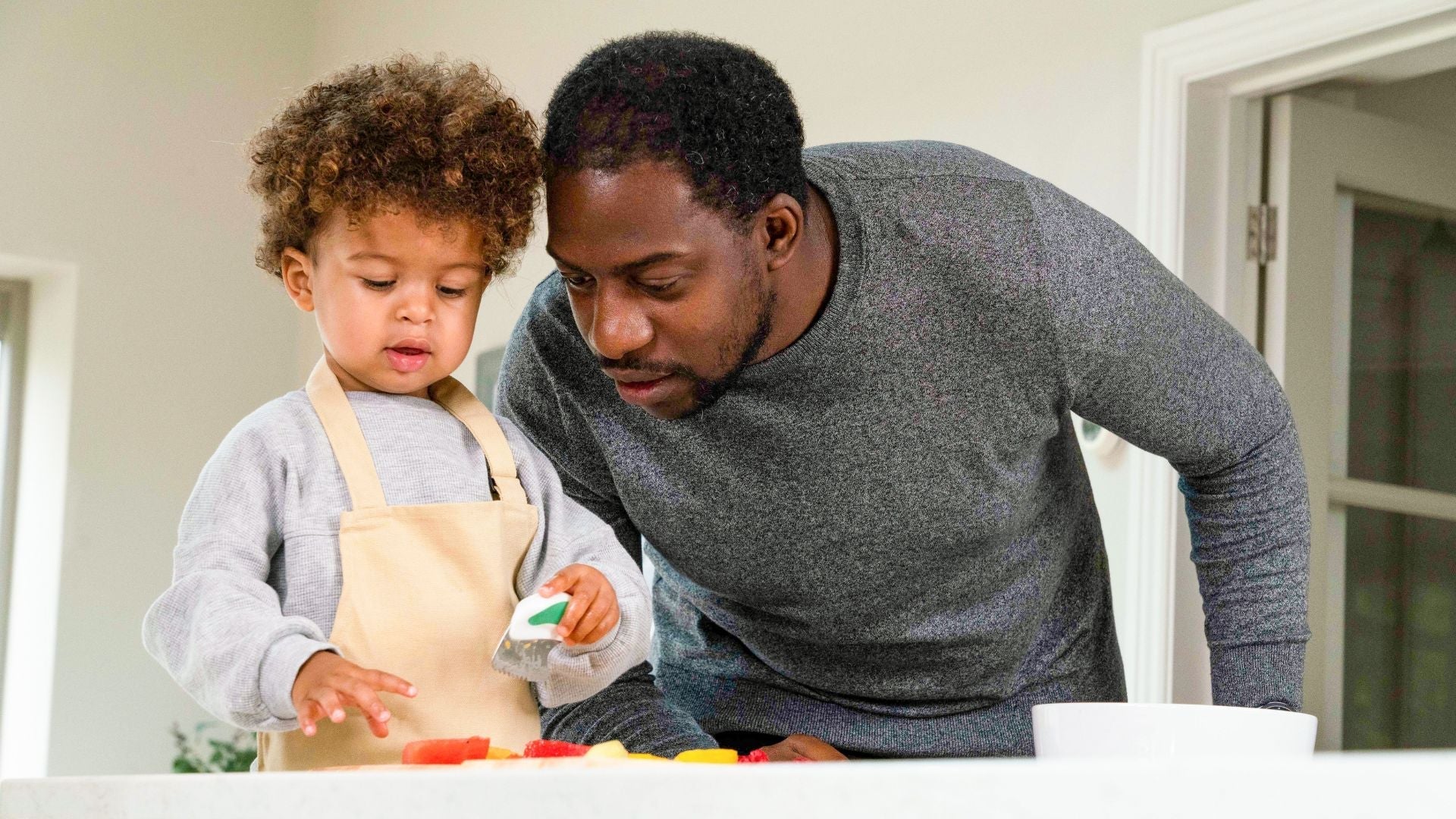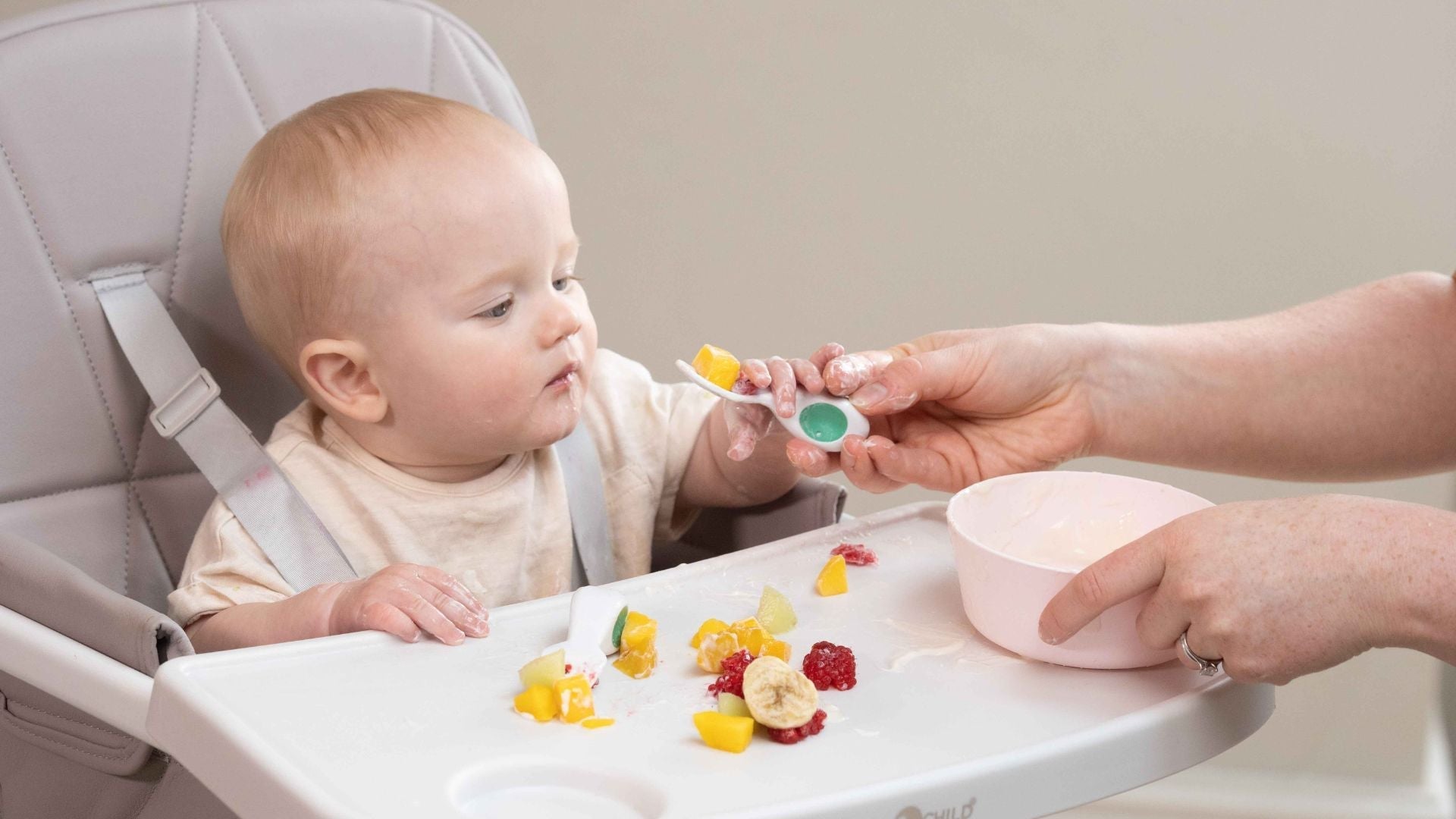Ah, weaning – that big, exciting, slightly messy milestone. If you're finding yourself Googling “what is baby weaning?” at 3am, you're not alone. This stage is a biggie. And while it might feel like stepping into the unknown, we’re here to break it down simply.
Put plainly, weaning is the gradual process of introducing your baby to solid food, while slowly reducing their reliance on breast milk or formula. It’s not about switching overnight, but easing them into a whole new world of flavours, textures, and independence (plus, let’s be honest, a little extra laundry).
At doddl, we know this stage can feel a bit overwhelming, but it’s also a golden opportunity for your baby to learn and explore. And with the right tools (and a bit of patience), it can even be… dare we say… magical.
So whether you’re spoon-feeding purées or embracing a more baby-led path, let’s explore everything you need to know about starting solids, the transition from milk to solid foods, and making mealtimes a little easier – and a lot more fun.
What does weaning mean?

Let’s get to the point: baby weaning means introducing solid foods into your baby’s diet, while they still get most of their nutrition from breast milk or formula – at least in the early stages.
According to the NHS weaning guidelines, most babies are ready to start solids at around six months. At this point, milk alone may no longer meet all their nutritional needs (hello, iron!), so starting solids helps fill the gap.
There are a couple of main ways to go about it:
- Traditional weaning – usually starts with smooth purées, then gradually introduces more textures.
- Baby-led weaning (BLW) – skips purées altogether and encourages babies to self-feed soft finger foods from the start.
You don’t have to choose one or the other – many parents blend both approaches based on what works best. However you begin, it’s good to remember that milk remains their main food source during the early weeks and months. Think of solids as a fun, low-pressure taste test to start with.
So if you’re still wondering about the meaning of weaning or need baby weaning explained in simple terms – it’s really about taking things step by step, with baby leading the way.
When does baby weaning start?
One of the most common questions is when to start weaning? Most babies are ready at around 6 months, according to the NHS Start for Life weaning guide.
But rather than setting a date in the calendar, it helps to look for a few markers that your baby might be ready for weaning:
- They can sit up steadily with good head control
- They have developed hand-to-mouth coordination (think: everything going straight to their mouth!)
- They’re showing an interest in food – watching you eat, grabbing at your plate, maybe even making those adorable chewing motions
You don’t need to rush it. If they’re not quite there yet, that’s totally fine. Every baby hits milestones at their own pace, and when it comes to weaning, patience really is a virtue (especially when food ends up in unexpected places).
If you’re unsure about the right weaning age for your baby or want to learn more about the signs baby is ready for solids, speak with your health visitor or GP for reassurance. This journey is meant to be a gentle one, no ticking clocks required.
Why weaning matters for your baby’s development

Aside from the comedy of spaghetti hair and yoghurt eyebrows, weaning is an important step in your baby’s growth and development. At around six months, their iron stores from birth start to run low, so food becomes an essential new source of nutrients.
But it’s not just about vitamins and minerals. Weaning also helps your baby:
- Develop chewing skills, even before teeth arrive (yes, gums are surprisingly powerful!)
- Explore textures, smells, and tastes – stimulating their senses and curiosity
- Practice hand-eye coordination by reaching, grabbing, and eventually self-feeding
- Gain confidence and independence, which can help reduce mealtime fussiness later
Plus, there’s the social side of eating. Sitting down together for family meals, even in short, wobbly doses, encourages babies to mimic and learn. It turns food into something joyful and shared, not just functional.
So if you’re wondering about the benefits of baby weaning or why it really matters, it’s not just about the food. It’s about growth in every sense – physical, emotional, and even social.
The 3 stages of baby weaning
Weaning isn’t a one-size-fits-all process – it unfolds gradually, usually in three loose stages. Here’s a closer look at the typical stages of baby weaning from 6 to 12 months.
Stage 1: First tastes (6–7 months)
Welcome to the world of first weaning foods and recipes. This is the taste test phase, where your baby gets used to the idea that food is a thing…and it's going in their mouth now.
- Start with smooth purées or well-mashed foods like carrots, sweet potato, or avocado
- Offer one food at a time to watch for reactions and preferences
- Include iron-rich veggies and gently introduce potential allergens like peanut butter and eggs (following current NHS advice.)
Don’t worry about quantity, it’s all about exposure. And expect a little drama – facial expressions are priceless at this stage.
Stage 2: Textures & variety (7–9 months)
Now the fun really begins. Your baby might be eating more frequently and showing real interest in what’s on your plate.
- Introduce thicker textures – think soft lumps, mashed pasta, or porridge
- Offer a variety of tastes and begin mixing flavours
- Combine cutlery with finger foods to encourage independence
This stage is perfect for practicing self-feeding, and toddler cutlery can help little hands get to grips with this new skill.
Stage 3: Family meals (10–12 months)
By now, your baby is joining in more at the table – and possibly stealing your toast.
This is the time to offer adapted versions of family meals, without added salt or sugar. The goal is to move away from “baby food” and toward “just food” – making things simpler for everyone (including your dishwasher).
Encourage chewing and self-feeding with soft, manageable chunks, and consider safe baby cutlery to support independence. A baby-friendly spoon or ergonomic fork can go a long way in making mealtimes smoother and more enjoyable.
Keep the focus on:
- Variety – exposing your baby to different textures and tastes
- Routine – regular mealtimes build comfort and predictability
- Positive vibes – meals should be a calm, positive experience
Baby-led weaning vs spoon feeding

There’s a lot of chatter about baby-led weaning vs spoon feeding, so let’s clear it up.
- Spoon feeding is typically more parent-led. You prepare purées or mashed foods and feed your baby using a spoon.
- Baby-led weaning (BLW) skips purées and lets babies self-feed soft, graspable finger foods from the start.
Each has its perks:
- Spoon feeding allows more control over what and how much your baby eats – helpful for easing in new tastes.
- Baby-led weaning supports independence and develops chewing skills early on.
And here’s the good news – you don’t have to pick sides. Many families use a blend of both. Your baby might enjoy a spoonful of porridge in the morning and then tackle soft veggies with their fingers at lunch. It’s all food, and it all counts.
So when looking at the types of baby weaning, know that it’s okay to find your own groove.
Growing together, one bite at a time
If you’ve reached the end of this guide still wondering what is baby weaning? – you’re not alone. It’s a journey, not a checklist, and every baby takes their own wobbly steps along the way.
And if you need a little help making mealtimes easier, doddl's range of clever toddler cutlery is designed to help your little one build confidence from the very first bite.
Because at the end of the day, weaning isn’t just about food – it’s about growing together.
FAQs about weaning

Can I start weaning before 6 months?
The NHS says it’s best to wait until around 6 months, unless advised by a healthcare professional. Earlier weaning isn’t recommended due to risks around digestion and choking.
What foods should I avoid during weaning?
Steer clear of added salt, sugar, honey (before 1 year), whole nuts, and high-mercury fish. And keep grapes and cherry tomatoes halved or quartered to avoid choking hazards.
How much food should my baby eat at 6 months?
Not much to start! A few teaspoons once or twice a day is plenty. Follow your baby’s cues – they’ll guide the pace.
How long does weaning last?
The process usually takes several months. By 12 months, most babies eat three meals a day with snacks and drink less milk.
Can I combine baby-led weaning with spoon feeding?
Absolutely. Many families do! It’s all about balance and what suits you and your baby best.




Hinterlasse einen Kommentar
Diese Website ist durch hCaptcha geschützt und es gelten die allgemeinen Geschäftsbedingungen und Datenschutzbestimmungen von hCaptcha.